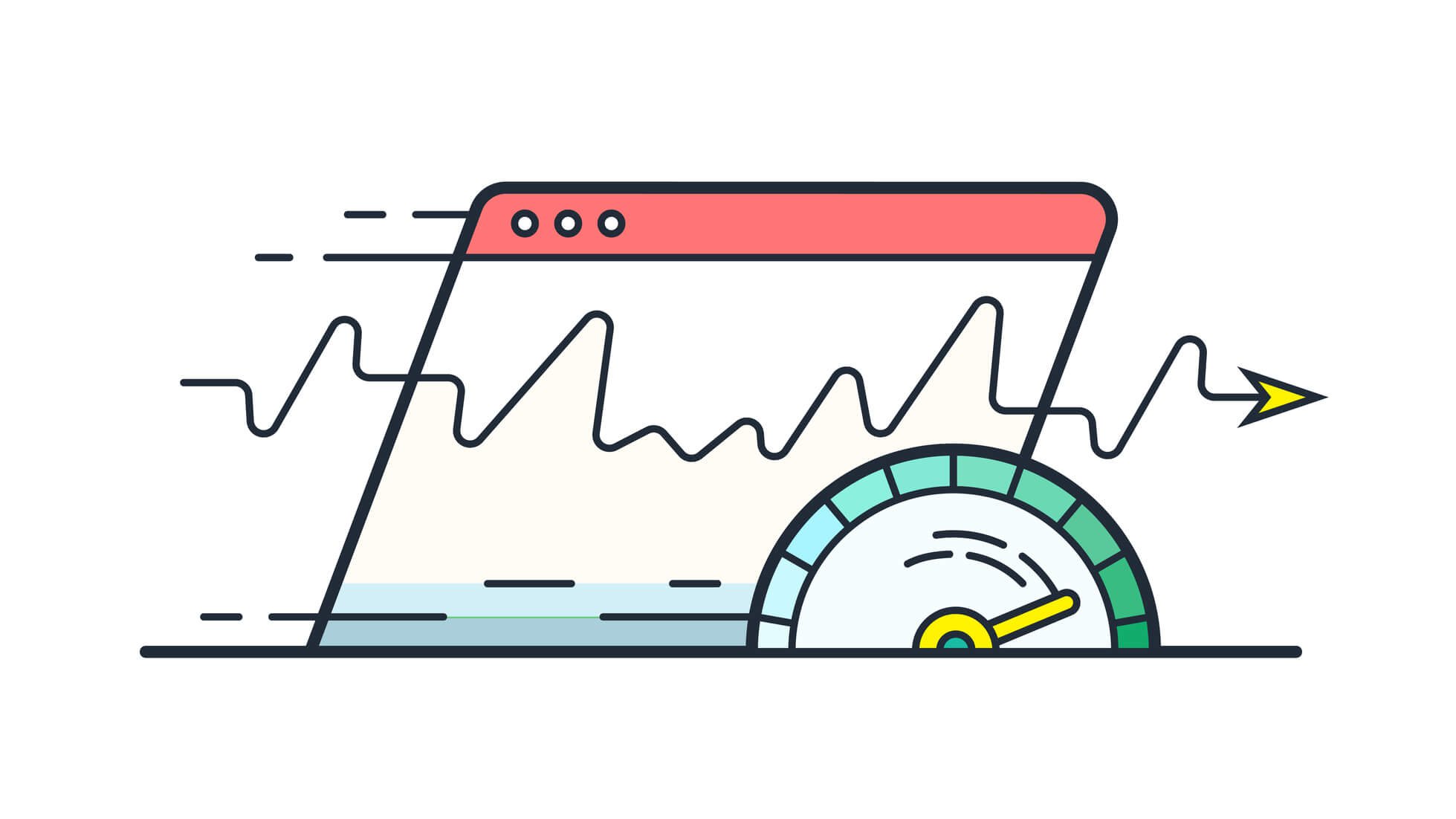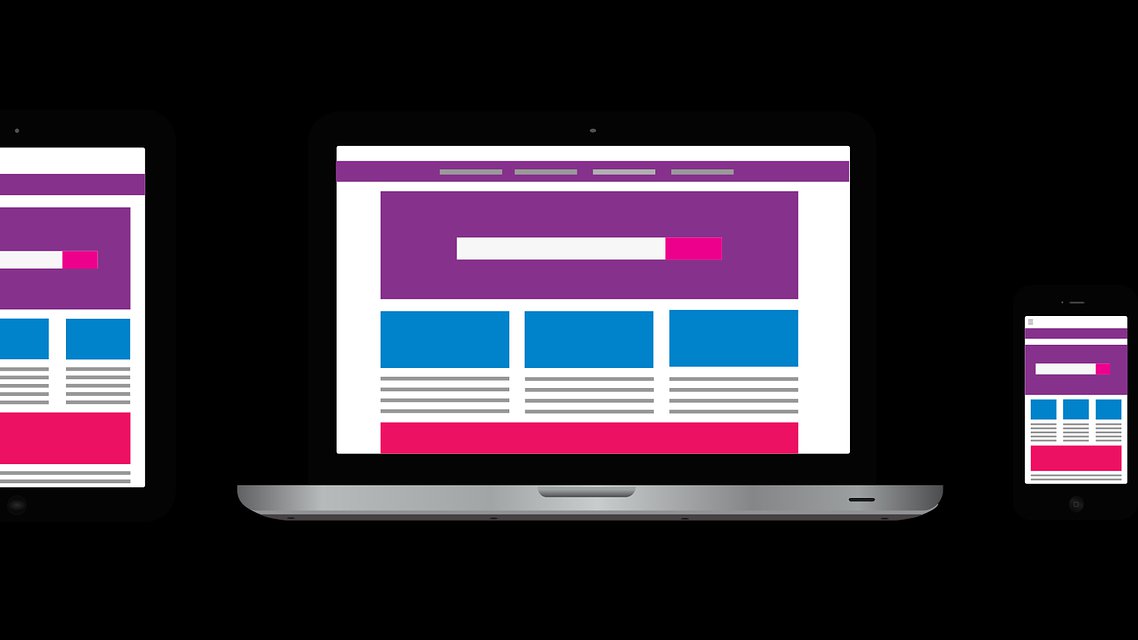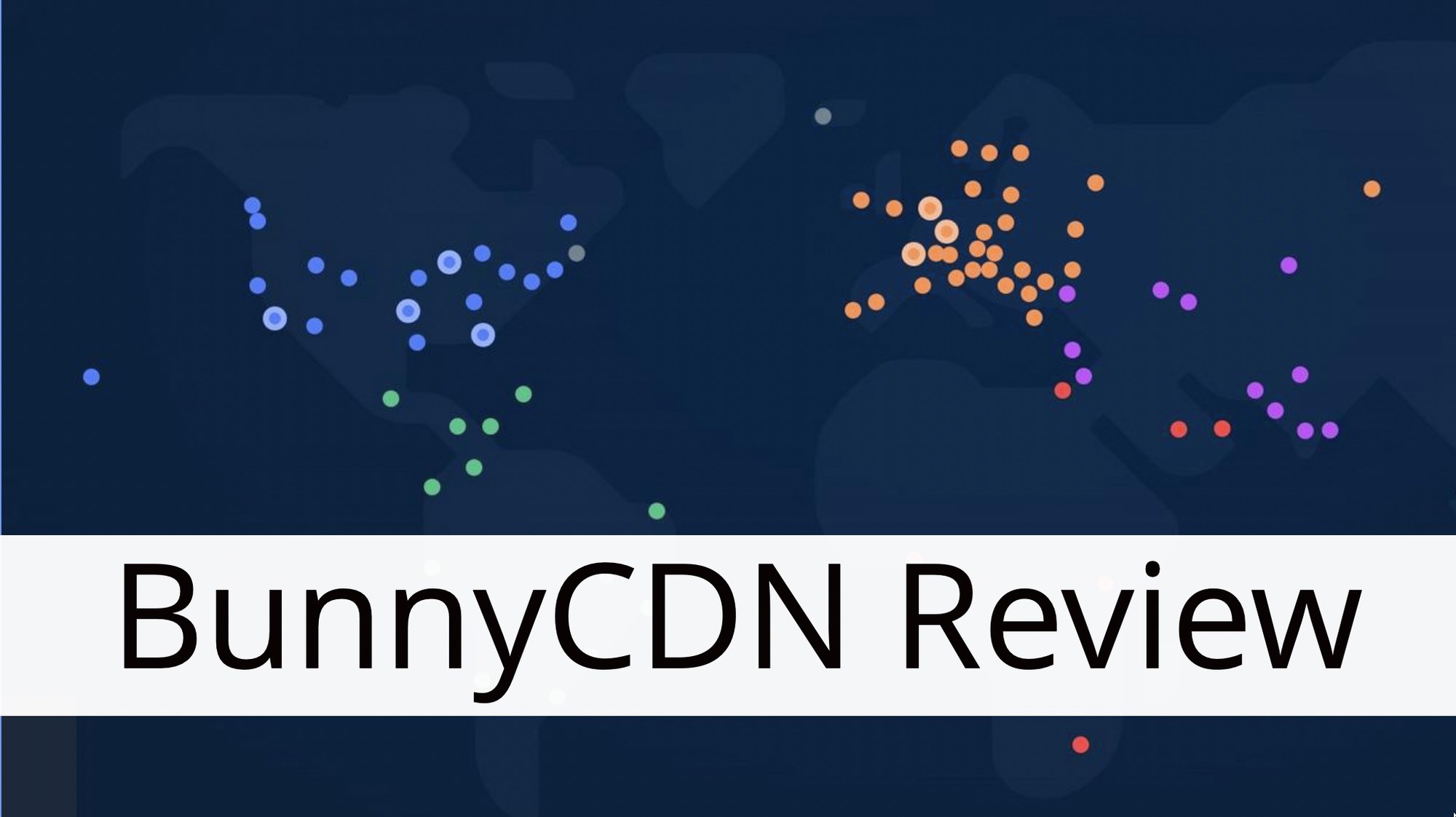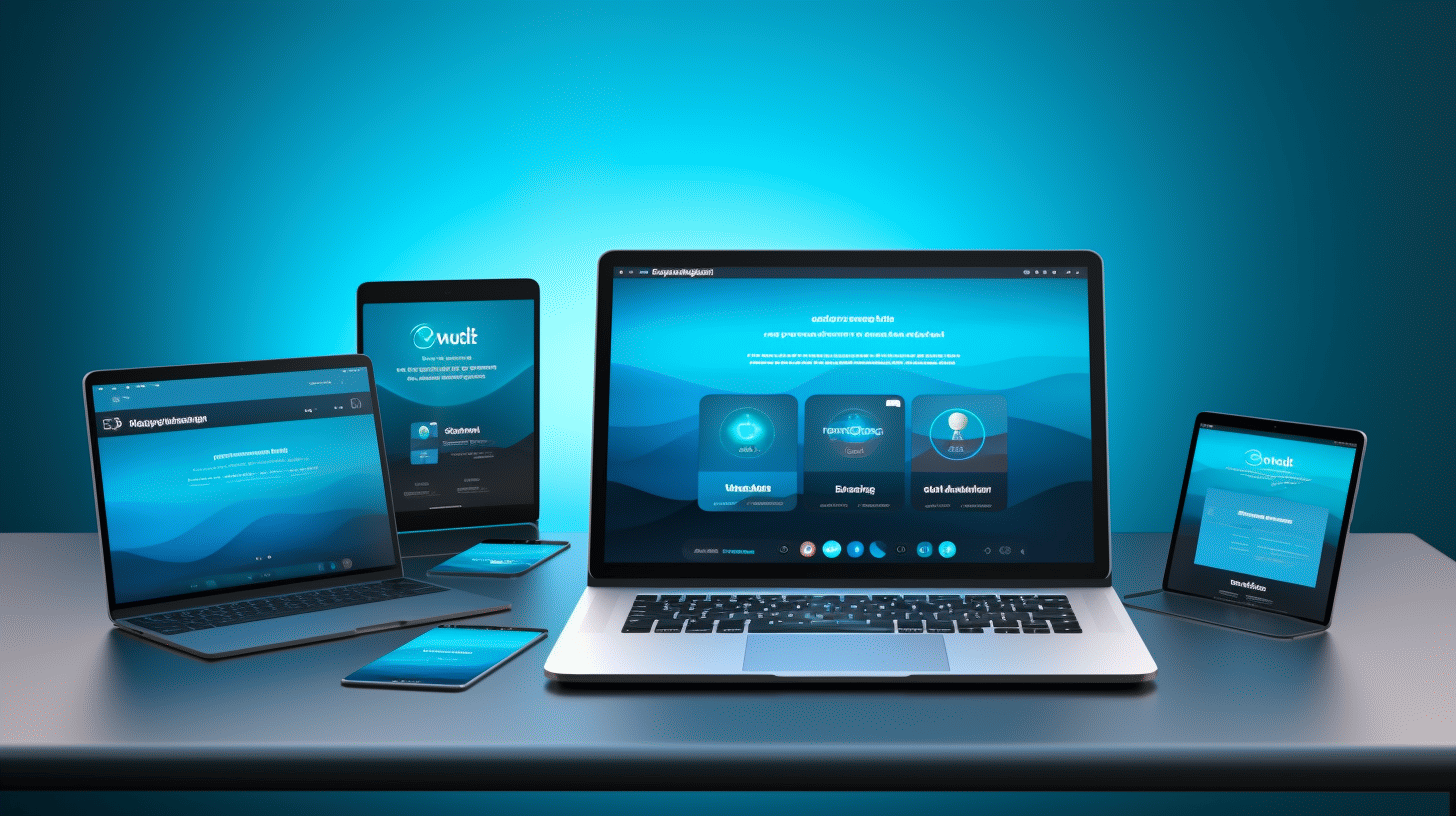In the ever-evolving world of web development, staying ahead of the curve is critical. As we enter 2023, developers are continually seeking innovative ways to create fast, scalable, and user-friendly websites. One approach that has gained significant traction in recent years is headless WordPress development. 🚀
Headless WordPress separates the frontend and backend components of a website, allowing developers to leverage the flexibility and power of WordPress as a content management system (CMS) while using modern front-end technologies. This approach opens up endless possibilities for creating dynamic and interactive websites. But what exactly is headless WordPress, and how does it work? Let’s dive in and explore this exciting development technique. 💡
Understanding Headless WordPress Development
Are you looking to create a dynamic and engaging website? Have you heard about Headless WordPress development? 🌟 This innovative approach is gaining popularity among web developers and content creators due to its flexibility and scalability. In this article, we will dive into the world of Headless WordPress, exploring what it is, how it works, and the incredible benefits it offers. So, let’s get started! 🚀
What is Headless WordPress?
Traditionally, when we think of WordPress, we envision a powerful content management system (CMS) that takes care of both the back-end, where all the data and functionality reside, and the front-end, responsible for displaying the content to users. However, with Headless WordPress, we separate these two aspects.
In a Headless WordPress setup, the back-end, or the “head,” handles the content management and administration, while the front-end, or the “body,” is decoupled and built using a separate technology, such as React, Angular, or Vue.js. This means that the way data is stored and managed is completely separate from how it is displayed and interacted with by users. 🏛️💥
How Does It Work?
Now that we have a general idea of what Headless WordPress is, let’s delve into how it actually works. In a traditional WordPress setup, the front-end and back-end are tightly coupled, meaning that any changes made to the back-end directly affect the front-end. However, with Headless WordPress, the front-end can communicate with the back-end through an API (Application Programming Interface) called the REST API.
The REST API allows the front-end to retrieve and display the necessary data from the back-end, without directly accessing the WordPress dashboard. This separation empowers developers to create highly customizable and interactive front-end experiences, while still benefiting from WordPress’s robust content management capabilities. 🌐💫
Benefits of Using Headless WordPress
Now that you have a solid understanding of what Headless WordPress is and how it works, let’s explore the exciting benefits it brings to the table. Here are just a few of the advantages that make Headless WordPress a game-changer:
- Flexibility: With Headless WordPress, you have the freedom to use any front-end technology you prefer, making it easier to create unique and customized user experiences.
- Scalability: By separating the front-end from the back-end, you can scale each component independently. This means that as your website grows, you can easily handle increased traffic and add new features without disrupting the other.
- Improved Performance: Headless WordPress eliminates the need to load unnecessary resources, resulting in faster page load times and a smoother browsing experience for your users.
- Future-Proofing: As technology and design trends evolve, you can easily adapt your front-end without having to migrate or change your content management system.
- API-Driven Development: By leveraging the REST API, you can build not only websites but also mobile apps, IoT (Internet of Things) applications, and other digital experiences using the data from your Headless WordPress installation.
Whether you’re a developer looking for more flexibility or a content creator seeking to enhance the user experience, Headless WordPress development offers a new world of possibilities. So why wait? Embrace the power of Headless WordPress and unlock the potential of your website! 💪🌐
Getting Started with Headless WordPress Development
🚀 Welcome to the exciting world of headless WordPress development! If you’re looking to leverage the power of WordPress as a content management system (CMS) while building sleek and modern front-end experiences, then you’re in the right place. In this guide, we’ll walk you through the essentials to help you get started with headless WordPress development.
Prerequisites
Before diving into headless WordPress development, it’s important to ensure that you have a solid foundation in a few key areas. Here are the prerequisites you’ll need to have a successful headless development experience:
- WordPress Knowledge: Familiarize yourself with the basics of WordPress, such as installing plugins, creating custom post types, and managing content. If you’re new to WordPress, don’t worry! WordPress has a vast and supportive community that is always ready to help.
- Front-End Development Skills: To build the front-end of your headless WordPress site, you’ll need to have a good understanding of HTML, CSS, and JavaScript. This will allow you to create dynamic and interactive web experiences for your users.
- API Fundamentals: Headless WordPress relies heavily on leveraging the WordPress REST API or GraphQL API to fetch and manipulate data. Familiarize yourself with API concepts such as endpoints, requests, and responses to make the most out of your headless development journey.
Setting Up a Headless WordPress Environment
Once you have a solid grasp of the prerequisites, it’s time to set up your headless WordPress environment. Here’s a step-by-step guide to help you get started:
- Choose a Headless WordPress Solution: There are several headless WordPress solutions available, each with its own set of features and benefits. Consider factors such as scalability, ease of use, and community support when choosing the right solution for your project.
- Install WordPress: Install the WordPress CMS on a web server or a local development environment. Many hosting providers offer easy one-click installations for WordPress, making the setup process a breeze.
- Configure the REST API or GraphQL API: Depending on your chosen solution, you’ll need to enable and configure the WordPress REST API or GraphQL API. These APIs will allow your front-end application to communicate with the WordPress backend and retrieve data.
- Develop the Front-End: Now comes the exciting part – building the front-end of your headless WordPress site! Utilize your front-end development skills to create a visually appealing and user-friendly front-end experience. Retrieve data from the WordPress API and seamlessly integrate it with your front-end code.
Configuring WordPress to be Headless
To configure WordPress for a headless setup, you’ll need to make a few key modifications to your WordPress installation. Here are some important steps to follow:
- Disable the Front-End Theme: In a headless WordPress setup, the front-end theme is not needed since the front-end is built separately. Disable or remove the active theme to ensure that the front-end is not influenced by any theme-related code.
- Install and Activate Headless Plugins: Install and activate headless-specific plugins that will help you expose your WordPress data via the API. These plugins will provide additional functionality and customization options for your headless WordPress site.
- Customize Permalinks: Adjust the permalink structure of your WordPress installation to create user-friendly URLs for your API endpoints. This will make it easier for your front-end application to fetch data from the API.
✨ Congratulations! You’re now well-equipped with the knowledge to get started with headless WordPress development. In the next sections, we’ll dive deeper into the configuration process and explore the different tools and frameworks you can use to build your headless WordPress site. So, let’s keep the momentum going and continue our headless WordPress journey!
Best Practices for Developing with Headless WordPress in 2023
Introduction
Headless WordPress has emerged as a powerful solution for building modern, dynamic websites and applications. By decoupling the front-end from the back-end, developers can leverage the flexibility and scalability of WordPress as a content management system (CMS) while enjoying the freedom to use any front-end framework or technology they prefer. However, developing with Headless WordPress comes with its own set of considerations and best practices. In this article, we will explore some key practices for developing with Headless WordPress in 2023.
Focus on Component-based Design
A component-based design approach is essential when developing with Headless WordPress. This approach involves breaking down the user interface into reusable components, which can then be combined to create complex UI structures. This not only improves the maintainability of the codebase but also enhances reusability across different projects.
To implement component-based design effectively, developers can adopt popular JavaScript frameworks like React or Vue.js. These frameworks provide a robust ecosystem of tools and libraries that streamline the development process. Additionally, utilizing a UI component library, such as Material-UI or Bootstrap, can further accelerate development by providing pre-built components that adhere to design best practices.
Optimize for Speed and Performance
In today’s fast-paced digital landscape, users demand websites and applications that load quickly and perform seamlessly. This is where optimizing for speed and performance becomes crucial when developing with Headless WordPress. To ensure a snappy user experience, consider the following best practices:
- Implement server-side rendering (SSR) to deliver initial content faster and enhance search engine optimization (SEO).
- Utilize caching mechanisms, such as content delivery networks (CDNs), to serve static assets efficiently.
- Optimize image files by compressing them without sacrificing visual quality.
- Minify and bundle JavaScript and CSS files to reduce network requests.
These optimizations not only improve user satisfaction but also contribute to better SEO rankings, as search engines prioritize fast-loading websites.
Adopt Test-driven Development
To ensure code quality and minimize errors, adopting test-driven development (TDD) is highly recommended. This methodology involves writing automated tests before writing the actual code. By focusing on tests first, developers can gain confidence in the reliability of their codebase and catch any issues early in the development process.
Popular testing frameworks, such as Jest or Cypress, can be integrated into the development workflow, enabling developers to write unit tests, integration tests, and end-to-end tests. Regularly running these tests helps maintain the integrity of the application, even as new features or enhancements are added.
Ensure High Security Standards
Security is of paramount importance when developing with Headless WordPress. As WordPress websites are a prime target for hackers, implementing robust security measures is crucial to safeguard sensitive data and protect against potential vulnerabilities. Consider the following security practices:
- Keep the WordPress core, plugins, and themes up to date to ensure the latest security patches and bug fixes.
- Implement strong user authentication mechanisms, such as multi-factor authentication (MFA).
- Regularly scan for vulnerabilities using security plugins and conduct security audits.
- Utilize secure protocols, such as HTTPS, to encrypt data transmission.
By adhering to these security best practices, developers can mitigate the risk of security breaches and provide a safe environment for users to interact with their Headless WordPress applications.
Accessible and SEO Friendly Design
Inclusive design principles promote equal access and usability for all users, regardless of their abilities or disabilities. When developing with Headless WordPress, it is essential to follow accessibility guidelines to create an inclusive user experience. Some key practices include:
- Providing alternative text (alt text) for images to aid visually impaired users.
- Ensuring proper semantic markup for screen readers and assistive technologies.
- Implementing keyboard navigation and focus management for better usability.
Additionally, optimizing for SEO is crucial to improve online visibility and drive organic traffic to your Headless WordPress application. Incorporate the following practices:
- Set relevant meta tags, titles, and descriptions to optimize search engine indexing.
- Generate clean and human-readable URLs that reflect the content hierarchy.
- Implement structured data markup to enhance search engine understanding.
By prioritizing accessibility and SEO-friendly design, developers can create websites and applications that cater to a broader audience and improve their online presence.
Continuous Integration and Continuous Deployment
To streamline the development process and ensure a smooth workflow, leveraging continuous integration (CI) and continuous deployment (CD) practices is highly recommended. CI/CD helps automate routine tasks, including testing, building, and deploying code changes, resulting in faster development cycles and improved code quality.
By integrating popular CI/CD tools like Jenkins, CircleCI, or GitHub Actions into the development workflow, developers can automate tasks such as running tests, merging code branches, and deploying changes to staging or production environments. This significantly reduces human error and allows for faster feature releases and bug fixes.
Stay Up to Date with WordPress and Technology Trends
As with any technology, staying up to date with the latest WordPress updates and industry trends is essential for successful development with Headless WordPress. By regularly following the official WordPress blog, community forums, and reputable tech publications, developers can stay informed about new features, security patches, and best practices.
Additionally, attending industry conferences, participating in webinars, and joining developer communities can provide valuable insights and networking opportunities. Engaging with the larger Headless WordPress developer community allows for knowledge sharing and staying at the forefront of technological advancements.
Conclusion
Incorporating these best practices when developing with Headless WordPress in 2023 sets a solid foundation for building high-performing, secure, and user-friendly websites and applications. By focusing on component-based design, optimizing for speed and performance, adopting test-driven development, ensuring high security standards, creating accessible and SEO-friendly designs, embracing CI/CD practices, and staying informed about WordPress and technology trends, developers can deliver exceptional digital experiences in the headless era.
Understanding Front-End Technologies for Headless WordPress Development
Are you ready to take your WordPress development skills to the next level? In this article, we’ll explore front-end technologies that can enhance your headless WordPress development projects. By integrating these technologies, you can create dynamic, interactive, and lightning-fast websites. So let’s dive in and explore some exciting options!
Using JavaScript Frameworks: React, Vue, and Angular
JavaScript frameworks have revolutionized the way we build web applications. They provide a structured approach to building user interfaces and offer a wide range of features and tools. When it comes to headless WordPress development, three popular JavaScript frameworks stand out:
- React 🚀: Developed by Facebook, React has gained immense popularity due to its component-based architecture and Virtual DOM. It allows you to create reusable UI components, making your code more maintainable and scalable.
- Vue 🎨: Known for its simplicity and flexibility, Vue is another excellent choice for headless WordPress development. Its gentle learning curve and extensive documentation make it easy for developers to get started. Vue also provides seamless integration with WordPress, allowing you to leverage the power of the CMS while building dynamic front-end experiences.
- Angular 🅰️: Developed by Google, Angular is a comprehensive framework that follows the Model-View-Controller (MVC) architectural pattern. It offers a robust set of features, including two-way data binding, dependency injection, and a powerful CLI. With Angular, you can create scalable and enterprise-grade applications that integrate seamlessly with WordPress.
Each of these frameworks has its own unique features and strengths. The choice ultimately depends on your project requirements, development experience, and personal preference. Regardless of which one you choose, integrating a JavaScript framework can significantly enhance your headless WordPress development workflow.
Integrating with Static Site Generators: Gatsby and Next.js
Static site generators have gained popularity for their ability to deliver blazing-fast websites with minimal server-side processing. They enable developers to generate static HTML pages at build time, resulting in improved performance and SEO. Two popular static site generators that integrate well with headless WordPress are:
- Gatsby 🎭: Powered by React, Gatsby is a powerful static site generator known for its exceptional performance. It leverages GraphQL to fetch data from different sources, including WordPress APIs. Gatsby also provides an extensive ecosystem of plugins and starters, making it easy to get started with headless WordPress development.
- Next.js ⚡️: Built on top of React, Next.js is a versatile framework that supports both server-side rendering (SSR) and static site generation. With Next.js, you can build dynamic websites that integrate seamlessly with WordPress APIs. Its powerful routing system and built-in data fetching capabilities make it a preferred choice for headless WordPress development.
Both Gatsby and Next.js offer unique features and benefits. Gatsby’s focus on performance and ease of use, coupled with Next.js’ versatility and server-side rendering capabilities, make them formidable choices for headless WordPress development.
APIs and GraphQL
When building a headless WordPress website, APIs (Application Programming Interfaces) play a crucial role in retrieving and manipulating data. WordPress provides a robust REST API that allows you to fetch data from your WordPress site in a headless manner. However, GraphQL has emerged as a powerful alternative for querying data from multiple sources.
GraphQL 💡: GraphQL is a query language for APIs that offers a flexible and efficient way of fetching data. It allows you to specify the data requirements in a single request, reducing the number of round trips to the server. With plugins like WPGraphQL, you can enable GraphQL support in WordPress and access your content using GraphQL queries.
By leveraging APIs, whether through REST or GraphQL, you can seamlessly integrate your front-end technologies with WordPress and create dynamic, data-driven experiences for your users.
In conclusion, understanding and utilizing front-end technologies in your headless WordPress development projects can elevate your websites to new heights. JavaScript frameworks like React, Vue, and Angular provide powerful tools for building interactive user interfaces. Static site generators like Gatsby and Next.js enable lightning-fast performance. And APIs, including GraphQL, allow for efficient data retrieval and manipulation. By harnessing the power of these technologies, you can create dynamic, engaging, and SEO-friendly websites that will leave a lasting impression on your users. So level up your skills and embark on an exciting journey of headless WordPress development!
Challenges to Overcome While Using Headless WordPress
Headless WordPress has gained popularity in recent years for its ability to separate the back-end functionality from the front-end presentation of a website. While it offers numerous benefits, there are specific challenges that developers and content creators need to overcome in order to successfully utilize this approach.
Managing Data and Content Delivery
One of the main challenges when using Headless WordPress is effectively managing data and content delivery. With the traditional approach, WordPress handles both the back-end data management and front-end content display. However, in a headless setup, the responsibility of retrieving and displaying content falls on the developer.
This can be particularly challenging when dealing with large databases and complex content structures. Developers need to implement strategies to efficiently retrieve and deliver the required data to the front-end, ensuring a seamless user experience. Additionally, they must consider factors such as caching, API rate limits, and data synchronization to ensure the content remains up-to-date across all platforms.
To combat these challenges, developers can employ various techniques, such as:
- Implementing a robust API caching mechanism to minimize API calls and improve performance.
- Using pagination and lazy loading techniques to load content incrementally, reducing the initial load time.
- Optimizing data models and queries for faster retrieval and processing.
- Utilizing Content Delivery Networks (CDNs) to distribute static assets and improve overall site performance.
By effectively managing data and content delivery, developers can ensure that their Headless WordPress setup remains responsive and delivers a smooth user experience.
Backend Complexity
Another challenge of using Headless WordPress is the increased complexity on the backend. In a traditional WordPress setup, developers primarily focus on theme development and front-end design. However, in a headless setup, the back-end becomes more intricate as developers need to build a separate API layer and handle data transformation.
To navigate this challenge, developers can consider the following strategies:
- Leveraging existing WordPress REST API endpoints to retrieve data efficiently.
- Using custom post types and taxonomies to organize and structure content effectively.
- Implementing authentication and security measures to protect the API endpoints from unauthorized access.
- Adopting development frameworks or libraries, such as React or Angular, to streamline the front-end development process.
By embracing these techniques, developers can effectively manage the backend complexity and ensure a seamless integration between the Headless WordPress setup and the front-end applications.
Lack of a Front-end Editing Experience
A common challenge faced when using Headless WordPress is the lack of a built-in front-end editing experience. In the traditional approach, content creators can directly edit and preview their changes on the front-end, providing a more intuitive workflow.
To address this challenge, developers can explore the following options:
- Implementing a separate front-end editing interface using the WordPress REST API.
- Utilizing visual editing tools or page builders that integrate with the Headless WordPress setup.
- Providing content creators with a preview feature that showcases their changes in real-time.
By incorporating these solutions, content creators can regain some of the familiar front-end editing experiences while still leveraging the benefits of a headless architecture.
In conclusion, while Headless WordPress offers numerous advantages, it also presents unique challenges that need to be addressed. By effectively managing data and content delivery, navigating backend complexity, and finding ways to provide a front-end editing experience, developers and content creators can harness the full potential of Headless WordPress and create compelling websites and applications.
Case Studies on Successful Implementations of Headless WordPress Development
📢 Welcome to a world of successful implementations of headless WordPress development! In this section, we will dive into some captivating case studies that showcase the power and effectiveness of using headless WordPress.
🎉 Let’s explore these real-life examples of companies leveraging headless WordPress to create innovative, scalable, and high-performing websites and applications. From e-commerce solutions to media platforms, these case studies highlight a range of industries and their unique implementations. So, let’s get started!
1. Company X: Revolutionizing E-Commerce with Headless WordPress
🏬 Company X, a leading e-commerce brand, set out to enhance their online shopping experience. By adopting a headless WordPress approach, they achieved unprecedented success. Here’s how they did it:
- Decoupling the Frontend and Backend: Company X separated their frontend and backend systems, using React for the frontend and WordPress as the backend CMS.
- Improved Performance: By decoupling the frontend, the website’s performance skyrocketed, resulting in faster load times, improved SEO rankings, and increased customer satisfaction.
- Flexibility and Scalability: With headless WordPress, Company X had the freedom to experiment with different frontend technologies, allowing them to adapt to changing market trends and easily scale their website as their business grew.
⭐️ The result? Company X witnessed a significant boost in conversion rates and revenue, solidifying their position as a leader in the e-commerce industry.
2. Company Y: Empowering Media Distribution with Headless WordPress
📰 Company Y, a media distribution platform, faced the challenge of delivering content across multiple channels while maintaining a consistent user experience. By embracing headless WordPress, they overcame these obstacles and achieved remarkable results:
- Content Agility: With a decoupled architecture, Company Y could publish content seamlessly across web, mobile, and other channels, ensuring a consistent brand experience.
- Personalization and Adaptability: Headless WordPress empowered Company Y to deliver personalized content to each user based on preferences, location, and browsing behavior, resulting in higher engagement and customer loyalty.
- Integration Capabilities: By integrating various third-party APIs and services with their headless WordPress setup, Company Y enhanced their platform’s functionality, expanding their reach and improving user satisfaction.
💥 The outcome? Company Y witnessed a substantial increase in user engagement, content consumption, and revenue, cementing their position as a frontrunner in the media industry.
3. Company Z: Elevating Customer Experience with Headless WordPress
🏢 Company Z, a global software provider, desired a website that delivered an exceptional user experience and showcased their cutting-edge products. By implementing headless WordPress, they achieved these goals and more:
- Rich Frontend Experience: Company Z utilized a modern frontend framework, such as Angular, to create an interactive and visually stunning website.
- Optimized Backend Management: With WordPress as the backend CMS, Company Z’s marketing team could effortlessly manage and update website content without any technical expertise.
- Continuous Improvements: Headless WordPress allowed Company Z to iterate and enhance their website continuously, incorporating user feedback and staying ahead of the competition.
🚀 The result? Company Z saw a significant increase in website visits, longer user engagement, and a boost in brand authority, establishing themselves as an industry leader.
💡 These case studies illustrate the remarkable outcomes that can be achieved through the implementation of headless WordPress. Whether it’s enhancing e-commerce platforms, empowering media distribution, or delivering exceptional user experiences, the potential for success is endless.
So take inspiration from these case studies and consider how headless WordPress can transform your own digital endeavors. The possibilities are immense, and the results can be truly extraordinary. It’s time to embrace the power of headless WordPress and unlock a world of endless opportunities!
Conclusion
In conclusion, headless WordPress development offers web developers a powerful and flexible approach to building websites and applications. By decoupling the frontend and backend, developers can create dynamic and engaging user experiences while enjoying the benefits of the WordPress CMS.
Throughout this article, we’ve explored the concept of headless WordPress, its benefits, best practices for development, front-end technologies to consider, and the challenges that may arise. We’ve also looked at case studies showcasing successful implementations of headless WordPress.
As web development continues to advance, it’s crucial for developers to stay up to date with the latest trends and technologies. Whether you’re building a corporate website, an e-commerce platform, or a content-rich blog, incorporating headless WordPress into your development process can provide immense value.
Remember, when it comes to managing your headless WordPress environment, you need a reliable and trusted hosting provider like Managed-WP.™. With their expertise and premium managed WordPress cloud hosting platform, you’ll have a simplified infrastructure, freedom in digital experiences, and expert support available 24/7/365. To learn more, visit Managed-WP’s website.
Embrace the future of web development with headless WordPress and unlock the full potential of your digital projects. Happy coding!
Frequently Asked Questions
- What is Headless WordPress Development?
Headless WordPress Development is an approach where the WordPress backend is decoupled from the frontend, allowing developers to use headless CMS capabilities and build websites or applications using any technology stack for the frontend.
- Why choose Headless WordPress Development?
Headless WordPress Development offers flexibility, scalability, and the ability to create unique user experiences. It allows developers to leverage the power of WordPress as a content management system while using modern technologies for the frontend.
- What are the best practices for Headless WordPress Development?
Some best practices for Headless WordPress Development include: 1. Choosing a suitable front-end framework or technology stack, 2. Optimizing performance by implementing caching and CDN, 3. Implementing proper security measures, 4. Using REST or GraphQL APIs to fetch data from the WordPress backend, and 5. Testing thoroughly to ensure compatibility and functionality.
- Which front-end frameworks or technologies can be used with Headless WordPress?
Headless WordPress can be used with various front-end frameworks or technologies such as React.js, AngularJS, Vue.js, Next.js, Gatsby, or even plain HTML, CSS, and JavaScript.
- Are there any downsides to Headless WordPress Development?
One potential downside of Headless WordPress Development is the increased complexity for developers, as it requires expertise in both WordPress and the chosen frontend technology. Additionally, certain WordPress plugins and themes may not be fully compatible with the headless approach.



















